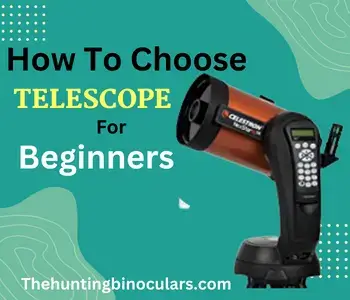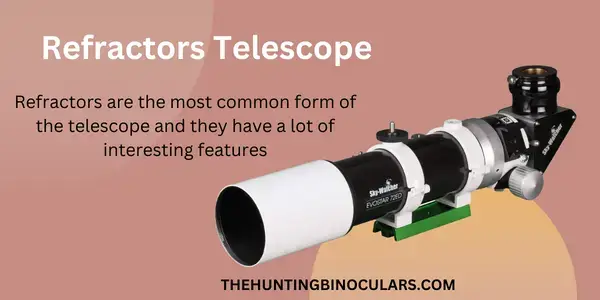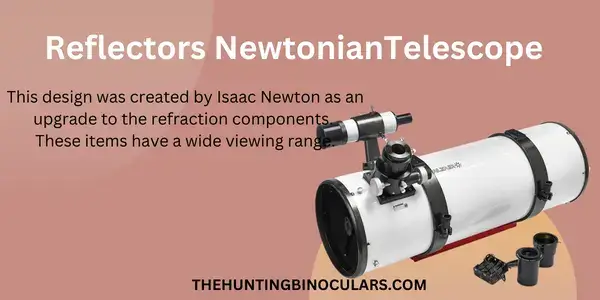
A telescope is a portable device that is utilized to see distant objects with more accuracy and clarity. You can see all the planets, stars, moon, galaxies even light with the help of a telescope. In other words, you can see the wonderful objects that are present in the sky as well as on the earth with added visibility.
But if you have never bought a telescope before, you might not be aware of how to choose a telescope for beginners, or what telescope to buy right? To buy a telescope, you will have to think of determining your needs, quality, type, your budget, and most importantly, magnification of the telescope.
Let’s further discuss the important factors of telescopes that are designed for beginners!
Table of Contents
How to Choose a Telescope for Beginners Tips and Factors
As there are different types and uses of telescopes, you will have to take into account different points when you decide to buy a telescope. So, below I am going to help you by providing different ideas that you must think of for a good quality telescope. Also, these elements will help you how to choose a good telescope:
Understand the basics of telescope optics
It’s essential to remember that the majority of celestial things produce some form of light. This light is assigned various identifiers that are based on its power and frequency. There are gamma rays, X-rays, ultraviolet, reflected light, heat, and more. People referred to this full spectrum as the electromagnetic spectrum.
Among other things, telescopes enable you to perceive the visible light spectrum. There cannot be a better idea to see the darkness of space at night than a telescope. With a telescope, the sights you can view will be magnificent.
Once you become familiar with it, you can experience and watch all types of fascinating astronomical phenomena. Thus, lunar eclipses are just a few of the more well-known ones. You can read the complete history of the telescope by clicking the link.
Decide what you want to see
It is incorrect to think of astronomy as some kind of integrated entity. This is a very diverse activity that enables you to focus on a wide range of specialized areas of interest. You can view solar panels and conduct a variety of astronomical research along with a telescope if you are a beginner.
Thus, you do not have to know that much about astronomy to see its beauty. There’s always the option of simply taking in the glories of the skies or, on a clear night, staring at the moon. So, it indicates, you must specify what you want to see before going to buy a telescope. We already have written a buying guide on telescopes for plants and galaxies, you can choose the right one for yourself.
Magnification of the Telescope
Although magnification is a quality of a telescope that you can see mentioned, a telescope’s diameter is more essential. If you have multiple eyepieces, you can adjust the telescope’s magnification because it relies on both the focal length of the telescope and the eyepiece.
But even with strong magnification, the aperture controls how much information you can see. Because your telescope can’t gather sufficient lighting to show you more information, using a small telescope with a high magnification will only enable you to focus on a hazy image. The detail you can view can also be affected by the atmosphere.
For a beginner’s telescope, a magnification of more than 200x won’t be significantly beneficial.
How can I calculate the magnification?
Well, it is not difficult to calculate the magnification of a telescope. By dividing the telescope’s field of view by the eyepiece’s focal length, you can determine magnification by yourself. The producer should be capable to provide both digits with ease.
Budget Range
When it comes to telescopes, price is an essential concern that can assist you how to choose the right telescope. Anything that costs less than $100 can be too difficult to utilize and not provide you with a satisfying visual experience. Beginner telescopes of excellent quality cost between $200 and $400. If they will have automated mounts, they will cost more than that.
The ability to view fainter items will be possible with larger and more costly telescopes. But keep in mind that compact telescopes will be simpler to carry, use, and preserve when they’re not in use.
You don’t need to invest a lot to have a decent view of the night sky because smaller telescopes are typically less expensive. You can learn about the sky with a nice set of binoculars if you’re unsure about investing in a telescope. Moon craters, several brilliant star groups, and even Jupiter’s brightest moons will all be visible.
What are the different types of Telescopes
Below are some common types of telescopes that can help you how to choose a telescope:
Refractors
Refractors are the most common form of the telescope and they have a lot of interesting features. They provide excellent views, are compact, simple to arrange, and are quick to handle. They also never need maintenance.
Variable magnifications are offered through adjustable eyepieces that increase the range of items that can be seen. Traveling to view the darkest skies away from light pollution is made possible by good mobility. But in the field of telescopes, it is said that the aperture is king.
Larger telescopes produce more stunning visual astronomical sights. Thus, refractors have restrictions in this regard. Extremely big lenses are overly expensive and very difficult for beginners to use.

Reflectors
Instead of having lenses, these reflectors utilize mirrors. They are placed in the pipe by the producers, and their purpose is to collect light. To the second reflecting element, they are moved. The eyepiece is positioned properly to enable sight of the image.
There are two reflective device subclasses:
- Newtonian optical systems
- Dobsonian optics
Newtonian Optical Systems
This design was created by Isaac Newton as an upgrade to the refraction components. These items have a wide viewing range. The device will work with low tripods because the eyepiece is near the top of the tube. For optimum functioning, the mirrors must be readjusted from time to time.

Dobsonian optics
This idea is easy and doesn’t require a tripod. Because it is a tabletop machine, a solid surface is needed. These gadgets offer exceptional value for the budget.
Compound
The picture in the eyepiece of this kind of telescope is focused using a collection of lenses and mirrors. Although they are a bit pricier, their design helps them to have higher magnification in a smaller frame.
These telescopes are excellent for visualizing bigger items like galaxies as they have a greater field of view than their size. This implies that you can purchase a large telescope that is lightweight. Tabletop telescopes with a Cassegrain design are excellent and kid-friendly.
Why aperture is essential to consider while buying a Telescope?
A mirror or lens’s size is described by an aperture and helps how to pick a telescope. Depending on the type chosen, a specific component is utilized. This trait demonstrates a light-gathering or image-brightness capacity. By stating the image resolution, it also generates picture quality.
The picture of the distant star will be greater the more aperture your gadget has. Do you desire to fully see distant stars and planets? You ought to search for larger dimensions. A respectable power can be sufficient for beginners. Because of this, the ideal telescope for novices has an aperture of roughly 70 millimeters (2.6 inches).
In luxury quantities, this dimension only exceeds 10 inches. In comparison to your eyes, a 70-millimeter diameter will gather 100 times lighter. This guarantees that the pictures of stars, galaxies, and lights you see are stunning.
The telescope size is impacted by the aperture. And a big lens indicates a substantial design. This affects mobility and makes moving a gadget more challenging. Thus, if you want to take your unit on the way, it is unpleasant.
What are the best Telescopes for beginners?
By considering different types of the best telescopes, you can get to know how to pick the best telescope. So, below are some best telescopes for beginners that you can choose to start your astronomy journey:
- Celestron NexStar 5SE Telescope
- Sky-Watcher Classic Dobsonian Telescope
- Celestron StarSense Explorer LT 80AZ
For seeing plants which one is better Telescope vs Monoculars You can read this complete informative article here.
FAQ’s
What You Should Know About Magnification?
The extraordinary magnifying power of telescopes can surprise beginners. Most gadgets have an amazing variety of magnification. It depends on the company’s lens and aperture. Environmental elements, particularly air factors, have an impact on the image as well.
Is it Essential To Consider Portability for a Telescope?
You should consider the weight and size of your first telescope as well. This is among the most important and useful concerns that many novice astronomers neglect. Some telescopes can weigh 20 pounds or less, while others are more than ten times bulkier.
How To Choose A Telescope?
A primary factor in a telescope’s performance is its power or magnification. It is typically controlled by the viewer’s choice of the eyepiece. You can calculate it by combining the focal lengths of the eyepiece and the aperture.
Conclusion
Now that I have described all about how to choose a telescope for beginners in this blog post. You can wisely choose a telescope by considering all these factors that have been explained in this article. Thus, magnification and quality of the telescope are the most essential factors of all. I hope that after going through this guide, you can buy a good quality telescope.
Do you want to ask about anything? Come into the comment section!
